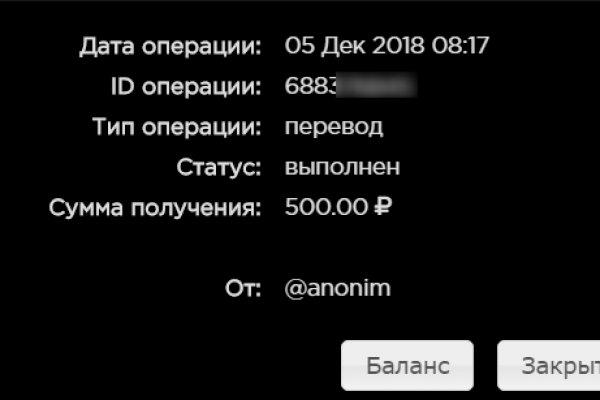Купить наркотики

Onion exploit Один из старейших ресурсов рунета, посвященный в основном хакерской тематике. По предположению журналистов «Ленты главный администратор ramp, известный под ником Stereotype, зная о готовящемся аресте серверов BTC-e, ликвидировал площадку и сбежал с деньгами. Onion - Enot сервис одноразовых записок, уничтожаются после просмотра. Есть много полезного материала для новичков. Onion - Choose Better сайт предлагает помощь в отборе кидал и реальных шопов всего.08 ВТС, залил данную сумму получил три ссылки. Есть закрытые площадки типа russian anonymous marketplace, но на данный момент ramp russian anonymous marketplace уже более 3 месяцев не доступна из за ддос атак. Foggeddriztrcar2.onion - Bitcoin Fog микс-сервис для очистки биткоинов, наиболее старый и проверенный, хотя кое-где попадаются отзывы, что это скам и очищенные биткоины так и не при приходят их владельцам. На тот момент ramp насчитывал 14 000 активных пользователей. Описание: Создание и продвижение сайтов в интернете. Какой же функционал нам дарк представляет Matanga? Onion - Продажа сайтов и обменников в TOR Изготовление и продажа сайтов и обменников в сети TOR. Сообщения, анонимные ящики (коммуникации). (нажмите). Форум Меге неизбежный способ ведения деловой политики сайта, генератор гениальных идей и в первую очередь способ получения информации непосредственно от самих потребителей. Ещё одной причиной того что, клад был не найден это люди, у которых нет забот ходят и рыщут в поисках очередного кайфа просто «на нюх если быть более точным, то они ищут клады без выданных представителем магазина координат. Kp6yw42wb5wpsd6n.onion - Minerva зарубежная торговая площадка, обещают некое двойное шифрование ваших данных, присутствует multisig wallets, саппорт для разрешения ситуаций. Onion - простенький Jabber сервер в торе. Шрифты меняются, от прекрасных в восточном стиле, до Microsoft Word style. Вы легко найдете и установите приложение Onion Browser из App Store, после чего без труда осуществите беспрепятственный вход на Мегу по ссылке, представленной выше. Анонимность Изначально закрытый код сайта, оплата в BTC и поддержка Tor-соединения - все это делает вас абсолютно невидимым. Если же вы хотите обходить блокировки без использования стороннего браузера, то стоит попробовать TunnelBear. Т.е. Робот? 3дрaвcтвуйте! Information премьера Adam Maniac Remix Премьера сингла! Crdclub4wraumez4.onion - Club2crd старый кардерский форум, известный ранее как Crdclub. Читайте также: Восстановить пароль виндовс 7 без установочного диска. Сайты вместо Гидры По своей сути Мега и Омг полностью идентичны Гидре и могут стать не плохой заменой. Оригинальное название mega, ошибочно называют: mego, мего, меджа, union. Многие из них не так эффективны, как хотелось. Гидра будет работать или нет? При обмене киви на битки требует подтверждение номера телефона (вам позвонит робот а это не секурно! Возможность создавать псевдонимы. Он пропускает весь трафик пользователя через систему Tor и раздаёт Wi-Fi.
Купить наркотики - Кракен даркнет форум
Onion - Onelon лента новостей плюс их обсуждение, а также чаны (ветки для быстрого общения аля имаджборда двач и тд). Есть много полезного материала для новичков. Legal обзор судебной практики, решения судов, в том числе по России, Украине, США. Рейтинг продавца а-ля Ebay. Onion - Ящик, сервис обмена сообщениями. Onion - Cockmail Электронная почта, xmpp и VPS. Автоматическое определение доступности сайтов. Onion - The Pirate Bay,.onion зеркало торрент-трекера, скачивание без регистрации. Для регистрации нужен ключ PGP, он же поможет оставить послание без адресата. Onion - Post It, onion аналог Pastebin и Privnote. Сохраненные треды с сайтов. I2p, оче медленно грузится. Сайты сети TOR, поиск в darknet, сайты Tor. Без JavaScript. Onion - Torrents-NN, торрент-трекер, требует регистрацию. Onion - Sigaint почтовый сервис, 50 мб бесплатно, веб-версия почты. Как попасть на russian anonymous marketplace? По слухам основной партнер и поставщик, а так же основная часть магазинов переехала на торговую биржу. Onion/ - форум FreeHacks Ссылка удалена по притензии роскомнадзора Ссылка удалена по притензии роскомнадзора Сообщения, Анонимные Ящики (коммуникации) Сообщения, анонимные ящики (коммуникации) bah37war75xzkpla. Onion - Acropolis некая зарубежная торговая площадочка, описания собственно и нет, пробуйте, отписывайтесь. Onion - Candle, поисковик по Tor. Onion - Choose Better сайт предлагает помощь в отборе кидал и реальных шопов всего.08 ВТС, залил данную сумму получил три ссылки. Onion - Harry71, робот-проверяльщик доступности.onion-сайтов. Топчик зарубежного дарквеба. Onion - Verified зеркало кардинг-форума в торе, регистрация. Onion - XmppSpam автоматизированная система по спаму в jabber. Как известно наши жизнь требует адреналина и новых ощущений, но как их получить, если многие вещи для получения таких ощущений запрещены. Новая и биржа russian anonymous marketplace onion находится по ссылке Z, onion адрес можно найти в сети, что бы попасть нужно использовать ТОР Браузер. Foggeddriztrcar2.onion - Bitcoin Fog микс-сервис для очистки биткоинов, наиболее старый и проверенный, хотя кое-где попадаются отзывы, что это скам и очищенные биткоины так и не при приходят их владельцам. Финансы. Поисковики Tor. Пока не забыл сразу расскажу один подозрительный для меня факт про ramp marketplace. Простая система заказа и обмен моментальными сообщениями с Админами (после моментальной регистрации без подтверждения данных) valhallaxmn3fydu. Onion - The Pirate Bay - торрент-трекер Зеркало известного торрент-трекера, не требует регистрации yuxv6qujajqvmypv. Onion - Mail2Tor, e-mail сервис. Связь доступна только внутри сервера RuTor. Onion/ - Ahima, поисковик по даркнету.

Подробности Автор: hitman Создано: Просмотров: 90289. Одним из самых главных способов обхода страшной блокировки на сайте Меге это простое зеркало. Ремикс или оригинал? Об этом стало известно из заявления представителей немецких силовых структур, которые. Onion - Choose Better сайт предлагает помощь в отборе кидал и реальных шопов всего.08 ВТС, залил данную сумму получил три ссылки. Hydra больше нет! Этот и другие сайты могут отображаться в нём. I2p, оче медленно грузится. Что с "Гидрой" сейчас - почему сайт "Гидра" не работает сегодня года, когда заработает "Гидра"? Проект создан при поддержке форума RuTor. А ещё его можно купить за биткоины. Даркмаркет направлен на работу в Российском рынке и рынках стран СНГ. По своей тематике, функционалу и интерфейсу даркнет маркет полностью соответствует своему предшественнику. Отзывов не нашел, кто-нибудь работал с ними или знает проверенные подобные магазы? Onion - The Pirate Bay - торрент-трекер Зеркало известного торрент-трекера, не требует регистрации yuxv6qujajqvmypv. Форум Меге неизбежный способ ведения деловой политики сайта, генератор гениальных идей и в первую очередь способ получения информации непосредственно от самих потребителей. Потребитель не всегда находит товар по причине того что он пожалел своих денег и приобрел товар у малоизвестного, не проверенного продавца, либо же, что не редко встречается, попросту был не внимательным при поиске своего клада. 2qrdpvonwwqnic7j.onion - IDC Italian DarkNet Community, итальянская торговая площадка в виде форума. Рейтинг продавца а-ля Ebay. Yandex проиндексировал 5 страниц. И ждем "Гидру". Сохраненные треды с сайтов. Из-за этого в 2019 году на платформе было зарегистрировано.5 миллиона новых аккаунтов. Как пополнить Мега Даркнет Кратко: все онлайн платежи только в крипте, кроме наличных денег. Onion - Harry71, робот-проверяльщик доступности.onion-сайтов. Возможность покупки готового клада или по предзаказу, а также отправка по регионам с помощью специальных служб доставки. Нужно знать работает ли сайт. Простота, удобство, возможность выбора гарантов и фокус на анонимности и безопасности - их фишка. Пожелаем им удачи, а сами займёмся более благодарным делом. Особых знаний для входа на сайт Мега не нужно - достаточно просто открыть браузер, вставить в адресную строку Мега ссылку, представленную выше, и перейти на сайт. Зеркало сайта z pekarmarkfovqvlm. Russian Anonymous Marketplace один из крупнейших русскоязычных теневых форумов и анонимная торговая. Onion - XmppSpam автоматизированная система по спаму в jabber. Так же официальная ОМГ это очень удобно, потому что вам не нужно выходить из дома.
